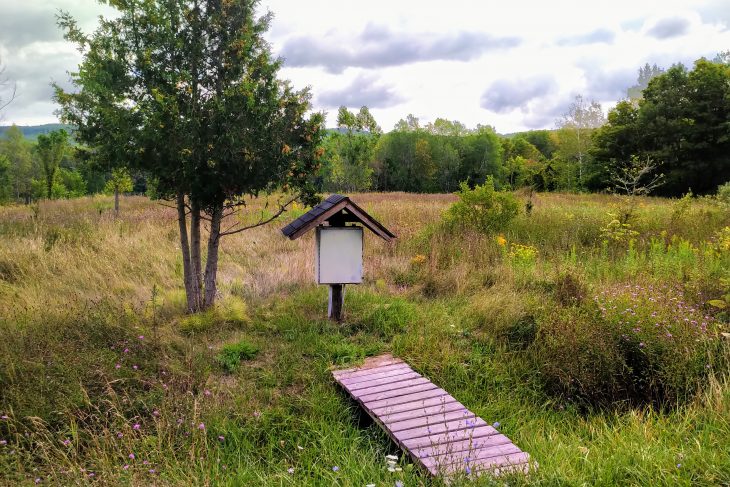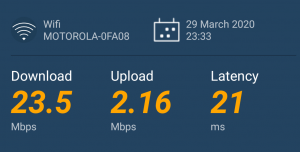
By Greg O’Brien
ON SATURDAY, CBC.ca published a story that said nearly 60% of rural Canadians don’t have access to high speed broadband, a piece which of course whipped around on social media and was republished unquestioned by other websites.
If I want to be nice, I’d say the story is terribly misleading. What it is though, is just untrue.
The story’s sub-headline and again in the body copy says “CRTC data suggests as few as 40.8 per cent of rural households have access to high-speed broadband.”
This is, simply put, a false sentence devoid of all context split from reality and the story does a poor job providing any context of reality the rest of the way.
Millions of rural Canadians have ready access to broadband. What they – and many urban Canadians don’t have access to – is broadband at minimum speeds of 50 Mbps download and 10 Mbps upload, which the CRTC has set as a goal for the entire nation to hit by 2030. That part at least is mentioned halfway through the story but nowhere near the headline – you know, the part designed to make people angry past which few read.
That boneheaded headline remains and misleads Canadians.
Nowhere does the story even ponder why 50/10 was set as the goal or even what Canadians need, would prefer to pay for, what such speeds would allow Canadians to do compared to slower (yet still broadband!) offerings – and what having access to slower internet in rural areas – or anywhere else for that matter – might mean.
The story said 50/10 = broadband. Anything less is not. And that’s wrong.
As telecom consultant Mark Goldberg put it in his blog Monday, “In reality, the CRTC says at the end of 2018, 90.5% of rural households had access to broadband at speeds higher than 5 Mbps, 84.3% had access to speeds higher than 10 Mbps, and 72.1% had access to speeds of 25 Mbps. The 40.8% figure referred to those in rural communities who already had access to the CRTC’s long term universal service objective of 50 Mbps.”
My family and I are based in Eugenia, Ont. during much of the winter and it’s where we stayed through the first seven weeks of the Covid-19 crisis. We benefit from Eastlink residential broadband service there and it did not let us down, even though in many tests done over those six weeks, download speeds never topped 25 Mbps and upload speeds never topped 5 Mbps. Pictured is a screen cap of the speeds we were seeing while watching a movie on Netflix on March 29th using the OpenSignal app. This was typical of the results we saw through March and April, no matter the time of day.
of the Covid-19 crisis. We benefit from Eastlink residential broadband service there and it did not let us down, even though in many tests done over those six weeks, download speeds never topped 25 Mbps and upload speeds never topped 5 Mbps. Pictured is a screen cap of the speeds we were seeing while watching a movie on Netflix on March 29th using the OpenSignal app. This was typical of the results we saw through March and April, no matter the time of day.
I worked constantly, as did my schoolteacher wife who uploaded videos made for her classes and easily took part in video conference calls. My daughter did her online homework, we did live video workouts online and when my son returned from university he gamed online with his friends. All the while we were using a Firestick to stream Netflix, Disney+ Prime and Crave to the TV, while one or two of us might have also been streaming to different devices at the same time.
(Pictured atop this story is an Eastlink network enclosure in nearby Kimberley, Ont.)
At no time was our unlimited data connection ever a problem. We all got our work done. We streamed. We gamed. Often at the same time. We virtually visited the doctor twice via live video. According to the CBC story, though, Eugenia doesn’t have broadband because Eastlink doesn’t deliver 50/10 to the village. It’s shoddy reporting that avoids context and facts that 23/2 is still pretty good broadband.
Of course it’s less than 50/10 or the 1 Gbps download speeds residents of Toronto and Montreal and other big cities can get. Did we feel “disadvantaged” – a word many activists like to use to moan when not everyone everywhere can get everything every time? Of course not. There was no disadvantage.
A better report was this one in the Globe and Mail recently where the reporter talked to a Canadian or two who can’t reliably access the internet affordably, as well as some actual ISPs. Stories like the ones there remain far too common – and they and low income Canadians anywhere who can’t afford broadband are the folks who need direct help, and fast. They are the ones who are truly disadvantaged.
I would bet that was probably the premise the CBC reporter started with: That there remain many Canadians living rurally (including this one in the far north who has started a petition) who can’t get reliable broadband, or affordable broadband. This is also the reason why, as we reported and the CBC story mentions, the federal government wants to try to speed up rural broadband expansion. They pledge to do so, soon…
However, to say Canadians must receive 50/10 speeds, everywhere, as soon as possible, is just dumb because it’s not true. It’s true Canadians need affordable broadband. It’s true the CRTC threshold is a nice target to aim for, but that doesn’t mean anything less than that threshold isn’t true broadband.
It’s also true that ubiquitous broadband has to be delivered equitably, for all involved. By that we mean it must be fair for the people who need a better level of affordable connectivity (not some pie-in-the-sky-notion that everyone living in Moosonee must have 50/10), fair for the companies tasked with deploying it in a way that’s affordable for them and their customers – and fair for all Canadians who collectively fund this rural expansion through our tax dollars and the fees we pay to our own service providers.
I’d love to see more consumer reporters and their headline writers dig into all that. Canadian consumers deserve better.



